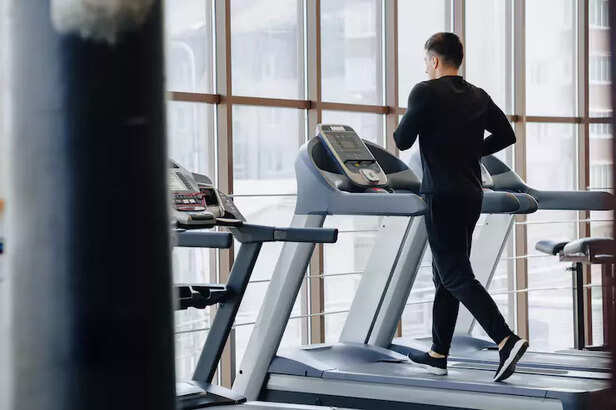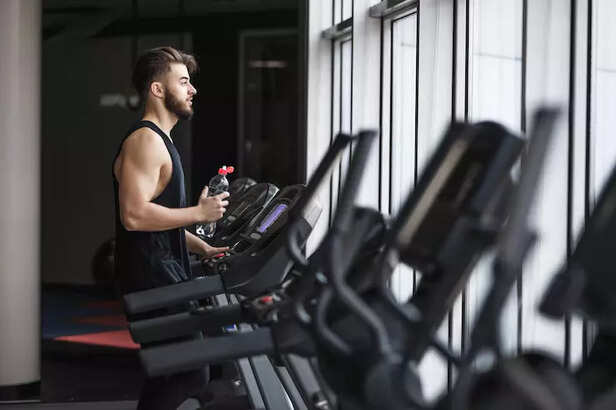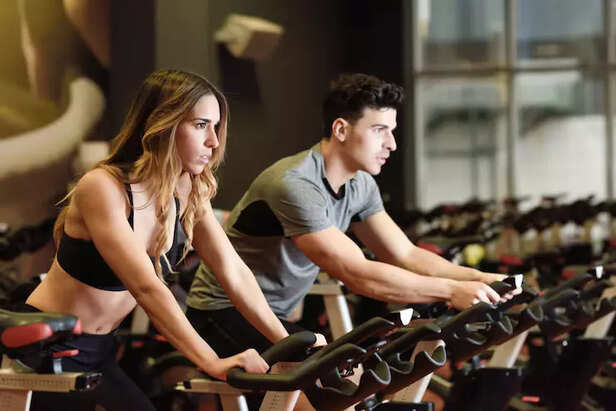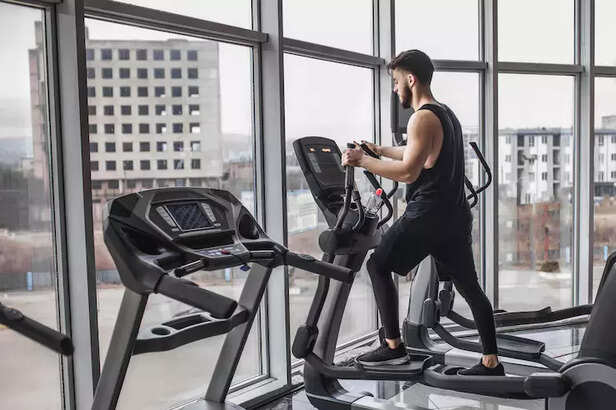Are You Wasting Time on the Treadmill Without Realizing It?
Amritansh Nayak | May 07, 2025, 07:30 IST

Common problems including poor form, repeating routines, and skipping warm-ups cause many treadmill users to unintentionally impede their progress. This article reveals the behaviors that lower workout effectiveness and raise the danger of injury, as well as how minor tweaks can turn your treadmill sessions into effective fitness increases.
Because of their simplicity and adaptability, treadmills are a mainstay of most exercise regimens. However, you may be squandering time or, worse, putting yourself at risk for harm if you're not utilizing them properly. These minor but crucial mistakes could be preventing you from reaching your full potential, ranging from depending too much on machine stats to neglecting crucial warm-up and cool-down stages. Making the most of every stride and every drop of sweat may be achieved by being aware of and correcting five typical treadmill errors, regardless of your level of experience.

Maintaining the same speed and incline throughout each session is one of the most frequent treadmill errors. This habitual approach might soon impede your growth, even if it can feel comfortable. Your workouts become less difficult and, consequently, less efficient for burning calories and increasing endurance when your body adjusts to a constant pace and slope. Your body needs variety to keep getting better. Interval training can help with it. In addition to burning more calories in less time, alternating between higher-intensity and recuperation intervals increases metabolism and cardiovascular fitness. For instance, try two minutes of moderate walking or running, followed by a minute of increasing your speed or incline, and then repeating. By changing the incline, you can simulate outdoor terrain, target different muscle groups, particularly your hamstrings and glutes, and intensify your workout without having to run faster. Over time, even minor adjustments can have a significant impact. Your treadmill exercises are kept interesting, effective, and challenging by varying the speed and incline. It guarantees that you're maximizing your time on the machine, which is more significant.

Although it's frequently disregarded, proper posture on the treadmill is just as crucial as the actual workout. Unknowingly, a lot of people stoop, look at their feet, or use the side rails to maintain their balance. Although these behaviors may seem simpler, they can actually make your workouts less effective and raise your risk of injury. Your body isn't in alignment when you're slumped over or leaning forward, which can put undue strain on your shoulders, lower back, and neck. Your posture and equilibrium are also impacted by looking down all the time. Instead, maintain a relaxed posture with your shoulders, gaze forward, and head up. Maintaining a neutral spine can be achieved by visualizing a straight line connecting your ears and ankles. At your sides, allow your arms to hang freely. Avoid crossing your arms or clenching your hands since these actions might disrupt your stride and hinder your body's natural rhythm. Above all, avoid the temptation to rest on the railings. Doing so alters your body mechanics and decreases core engagement, which lessens the effectiveness of the workout. In addition to increasing performance, proper treadmill form also helps avoid long-term damage, joint pain, and weariness. Train wisely, and your body will appreciate it.

Many treadmill users neglect the warm-up and cool-down in their haste to fit in a workout. However, it can be more detrimental than beneficial to go right into high-intensity training or to abruptly cease afterwards. These changes are essential for getting the body ready and encouraging a safe recovery. A good warm-up lowers your chance of injury by raising your body temperature, improving blood supply to your muscles, and gradually increasing your heart rate. It also helps you mentally get ready for the workout. Walk slowly to moderately for five to ten minutes, then progressively up the ante. Your muscles become more relaxed and prepared to work more effectively as a result. Similarly, cooling down after exercise aids in your body's transition back to rest. Blood can pool in your legs from abrupt stops, which can make you feel lightheaded or even faint. A 5-minute cooldown, such a leisurely stroll followed by mild stretching, helps control your heart rate, increases blood flow, and lessens pain after an exercise. It may seem innocuous to ignore these training bookends, but doing so eventually slows down your progress and raises your chance of injury. Your performance and general recuperation might be greatly impacted by a few extra minutes before and after your practice.

Although treadmills provide a variety of data, such as distance, pace, incline, and calories burnt, depending only on these figures may give the impression that you are making progress. Metrics don't always accurately represent your level of effort or fitness, even though they might be helpful for monitoring broad patterns. For example, because the calorie’s burned display is based on generic calculations that don't take into account specific aspects like muscle mass, metabolism, or workout intensity, it frequently displays erroneous numbers. In a similar vein, concentrating too much on pace or distance might make you lose sight of how your body feels while working out. Instead, measure your actual effort using methods like the Rate of Perceived Exertion (RPE) and heart rate monitoring. Whether you're in the ideal range for endurance, fat burning, or high-intensity conditioning can be determined with a heart rate monitor. RPE is a straightforward technique that helps you stay in sync with your body by having you rate your effort on a scale of 1 to 10.
Although the treadmill is an excellent instrument, it is only that—a tool. Your entire workout shouldn't be dictated by the numbers on the screen. Pay attention to your feelings, your objectives, and the ways that regular work is advancing your long-term fitness path. If done correctly, treadmill workouts can be quite beneficial. Better performance and safer training can result from avoiding typical hazards including bad posture, repetitious routines, and ignoring your body's signals. In addition to preventing injuries, you may maximize the benefits of your treadmill exercises by focusing on form, switching up your sessions, and prioritizing actual effort over numbers. Instead, then just training harder, it's time to train smarter.
Explore the latest trends and tips in Health & Fitness, Travel, Life Hacks, Fashion & Beauty, and Relationships at Times Life!

treadmill mistakes
Consistently Using the Same Speed and Incline

cardio workout tips
Bad Form and Posture

fitness routine
Ignoring the Cool-Down and Warm-Up

healthy lifestyle
Using the Machine's Metrics Too Much
Although the treadmill is an excellent instrument, it is only that—a tool. Your entire workout shouldn't be dictated by the numbers on the screen. Pay attention to your feelings, your objectives, and the ways that regular work is advancing your long-term fitness path. If done correctly, treadmill workouts can be quite beneficial. Better performance and safer training can result from avoiding typical hazards including bad posture, repetitious routines, and ignoring your body's signals. In addition to preventing injuries, you may maximize the benefits of your treadmill exercises by focusing on form, switching up your sessions, and prioritizing actual effort over numbers. Instead, then just training harder, it's time to train smarter.
Explore the latest trends and tips in Health & Fitness, Travel, Life Hacks, Fashion & Beauty, and Relationships at Times Life!
